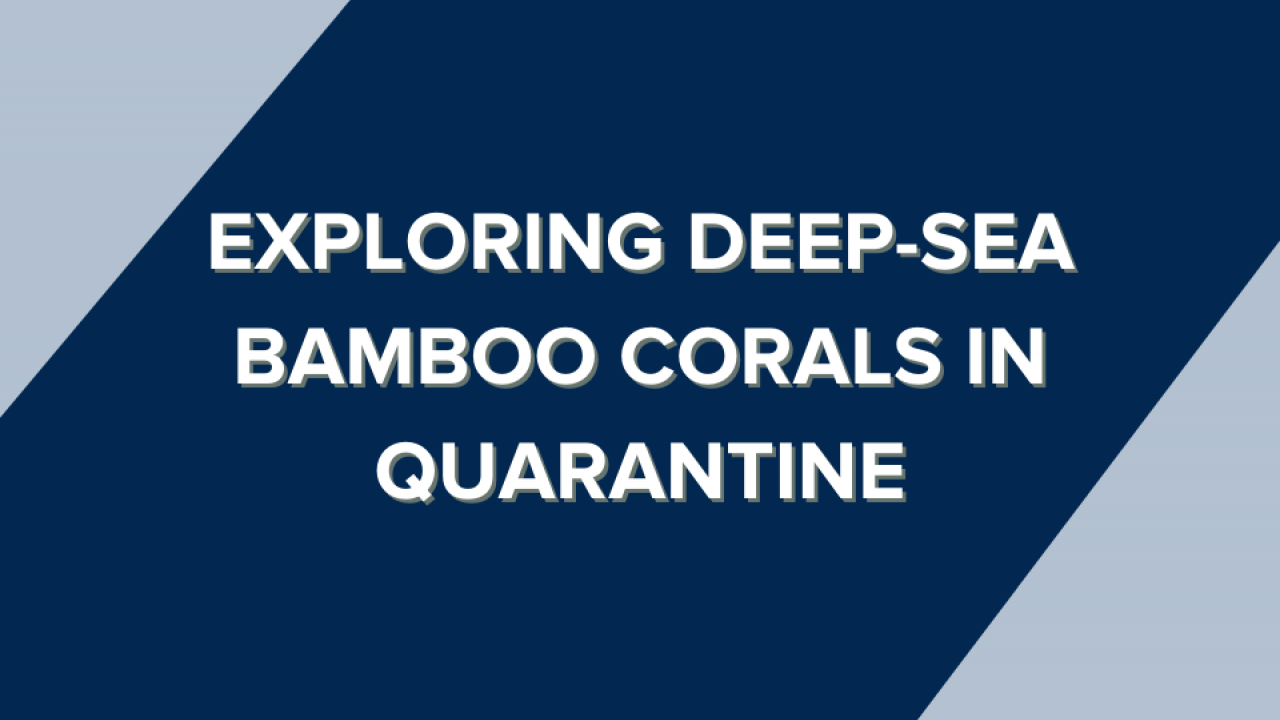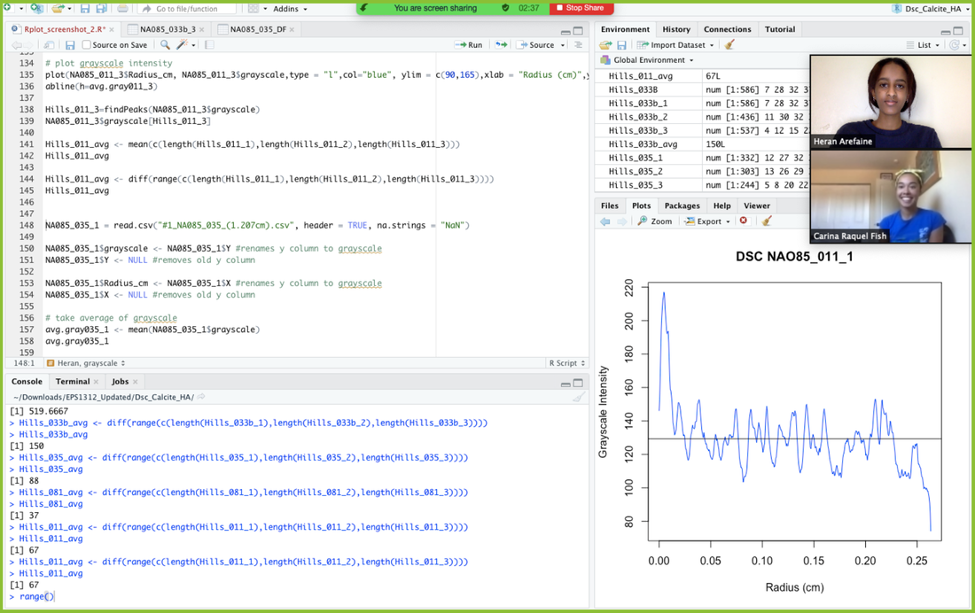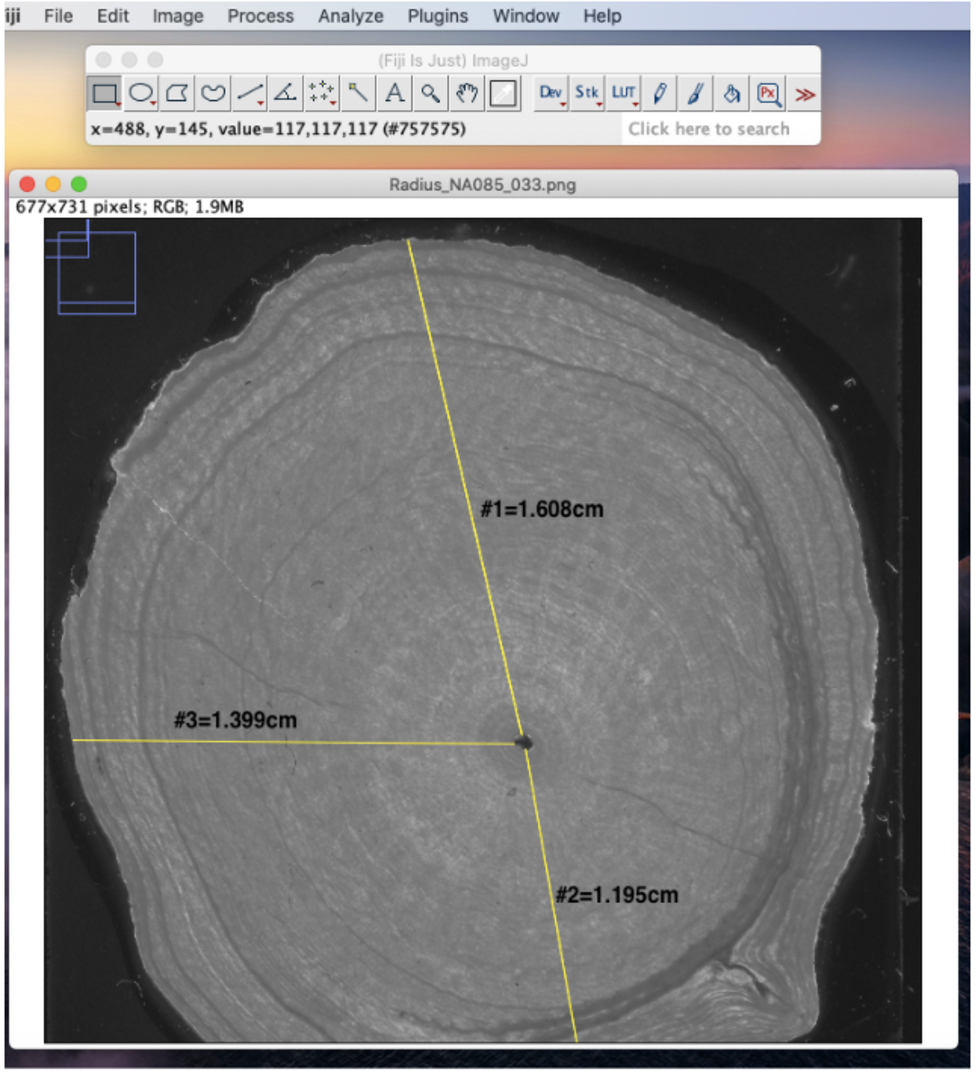
Exploring deep-sea bamboo corals in quarantine
With the unfortunate pandemic of COVID-19 still taking place around the world, it was very difficult to secure an internship and when I was informed of my acceptance to the SRJC-BML internship program, I did not hesitate to immediately confirm my position. This summer I had the pleasure of working and exploring alongside my mentor, Ph.D. Candidate Carina Fish, who is very passionate about the deep ocean and uncovering its past environmental conditions with the help of deep-sea corals.
The first step to uncovering past ocean conditions from corals is to quantitatively determine their age. Carina’s suite of deep-sea corals were all retrieved from Cordell Bank National Marine Sanctuary and classified within the bamboo coral family. Bamboo corals have been around since the Late Cretaceous epoch and they each can record up to 400 years of ocean history. Bamboo corals get their name because their segmented skeleton is similar in appearance to bamboo plants. Similar to tree rings, the radial growth of the calcite part of bamboo coral skeletons (composed of calcium carbonate, CaCO3) alternates light and dark bands. The banding is thought to be the result of seasonal changes in growth rate. Previously, Carina and her colleagues determined the approximate age of the bamboo coral samples using the organic node portion of the coral skeleton with methods such as bomb-spike radiocarbon chronology and layer counting. This summer, I sought to calculate the age of the bamboo corals using the calcite internode part of the skeleton with software programs Fiji/ImageJ and R to quantitatively identify and count the light and dark band pairs. My work showed that the number of light/dark couplets of a coral is much higher than what the organic node chronologies would suggest. This outcome could have several explanations such as the variability of seasonal growth being higher than previously thought (i.e. not two seasons of fast/slow growth, but event-scale growth with each pulse of food/marine snow) or the possibly inaccurate measurements by the software programs used. Although the age number determined using different methods (utilizing two different parts of the skeleton) did not agree, it was nonetheless very fascinating to apply a novel methodology to determine the age of bamboo corals.

Some of my favorite highlights of this internship include working with R. I had never learned how to code before but my mentor did a great job breaking down the steps and with her help, I was able to write scripts for this independent project, and this experience has inspired me to continue improving my skills with coding. Another memorable learning experience was attending the weekly professional development meetings organized by the SRJC-BML internship co-directors. From these meetings, I was able to improve my science communications, get insights into different careers in science from a very diverse group of guest speakers, and got advice and guidance on college experiences from past transfer students.

Overall, I am very grateful for the opportunity to intern during these difficult times. Although this internship was limited to being remote, I was still able to gain different types of skills with the help of my mentor and other staff. I was able to improve my research, observational, and communication skills. During my time in the internship, I was able to get a peek at the research that takes place in paleoceanography, such as how samples are collected and processed, how to obtain valuable data, and interpret it all through Carina’s study. And these new skills that I have gained throughout this internship will help me with any future opportunities I come across, which I credit and express deep gratitude to my mentor and all of SRJC-BML staff.
Biography: Heran Arefaine was an intern in the 2020 SRJC-BML Summer Internship Program. She worked with her mentor, Carina Fish. Heran just finished her third year at Santa Rosa Junior College and will be transferring to UC Davis.
